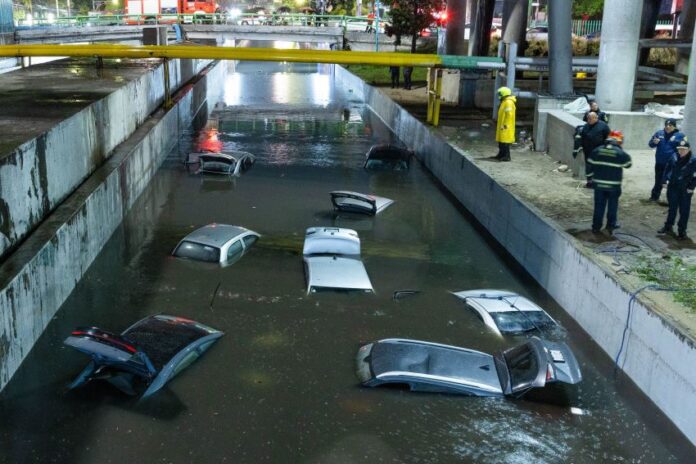Severe flooding following heavy rainfall on Monday created chaos in Mexico City, México state and other regions of central Mexico, crippling mobility, disrupting public transportation and inundating a hospital.
The Security Ministry (SSPC) reported that rainfall averaged 15 liters per square meter in the capital, however, the northeastern part of Mexico City reported peaks of up to 45 liters per square meter.
“IMSS”:
Porque anoche la Clínica 53 del IMSS sufrió el colapso del drenaje. Pacientes, enfermer@s y familiares estuvieron en aguas negras durante la noche. pic.twitter.com/QLmwA2vhb0— ¿Por qué es Tendencia? (@porktendencia) June 3, 2025
The SSPC noted that flooding damage in Mexico City was primarily reported in the following boroughs: Iztapalapa, Iztacalco, Venustiano Carranza, Coyoacán, Cuajimalpa, Cuauhtémoc, Gustavo A. Madero, Tláhuac and Xochimilco.
By early evening, the Iztapalapa, Ignacio Zaragoza, Ermita Iztapalapa, and Tláhuac avenues were virtually inaccessible, with vehicles stalled by rising water, forcing drivers and passengers to wade through it. On Ignacio Zaragoza avenue near Acatitla, the water was so high that several vehicles sank.
Authorities also reported fallen trees and fences.
The Mexico City Metro partially suspended service on Line A, which operated from Pantitlán to Guelatao while the stations from Peñón Viejo to La Paz remained closed due to water on the tracks. Lines 1 and 3 of the Cablebús also temporarily suspended service due to Monday’s thunderstorm.
At 11:46 CST on Tuesday, Mexico City Mayor Clara Brugada announced on X that service had been completely restored to Line A of the Metro.
Authorities activated Operation Rains 2025 and the Tlaloque Protocol, deploying emergency teams, technical personnel and specialized machinery to address flooding and rescue trapped vehicles on Monday night.
The Ministry of Integrated Water Management (SEGI AGUA) deployed over 150 technicians and operators, 15 hydropneumatic trucks, four Hercules-type pumping equipment, 14 pieces of emergency pumping equipment, 22 dry vans and three cranes.
Mexico City has experienced similar flooding recently, but in an official statement released on Tuesday, the mayor said, “We had not seen a storm of this magnitude since 2017.”
In México state, heavy rains caused flooding in municipalities such as Toluca, Lerma, Ocoyoacac, San Mateo Atenco, Metepec, Zinacantepec, Chapultepec, Ecatepec, Nezahualcóyotl, Chimalhuacán, Texcoco, Atlacomulco, Cuautitlán Izcalli, Tultitlán, Zumpango, Naucalpan, Tlalnepantla, Valle de Bravo, Ixtapan de la Sal, Tejupilco and Amecameca.
In Los Reyes Acaquilpan, the General Hospital of Zone 53 of the Mexican Social Security Institute (IMSS) suffered severe flooding, with water from sewers entering the emergency areas, the waiting room and the pharmacy, reaching up to 30 centimeters in some areas. The water swept away medicines and medical supplies.
Patients, staff and family members had to climb onto benches to avoid getting wet.
View this post on Instagram
Several major highways connecting the capital with other regions (such as Mexico City-Querétaro, Mexico City-Toluca, Mexico City-Puebla, Mexico City-Pachuca, Mexico City-Texcoco, Mexico City-Cuernavaca and Mexico City-Cuautla) reported complications due to flooding and low visibility, affecting interurban mobility.
Heavy rain is again in today’s forecast for Mexico City and the surrounding Valley of Mexico. Authorities have called on the population to avoid driving in areas with flooding, and facilitate mitigation efforts. Residents can report waterlogging and flooding by calling the H20 line at *426, as well as by calling 911.
With reports from Infobae, La Jornada and Nmás
